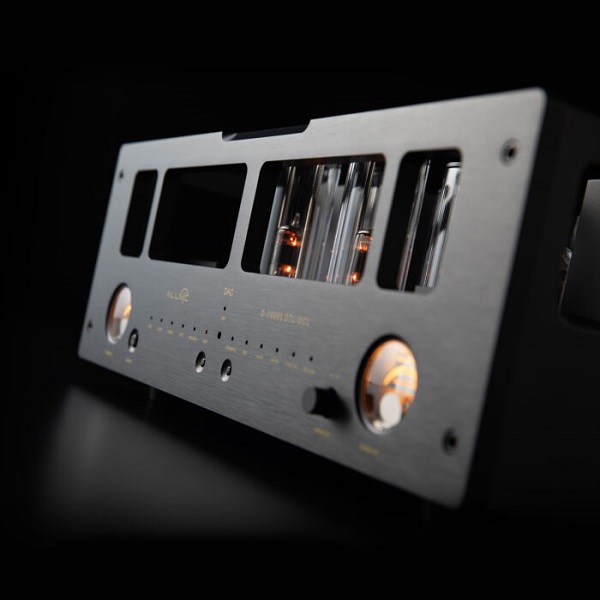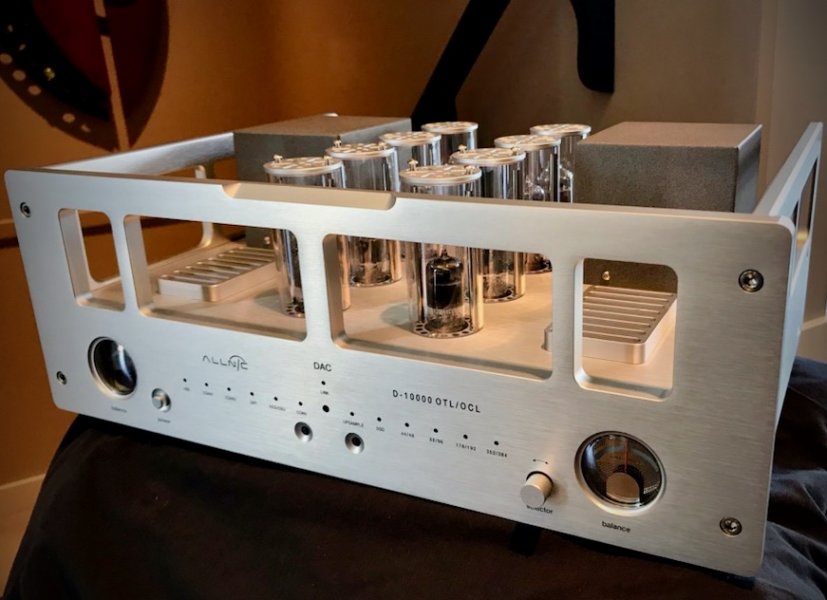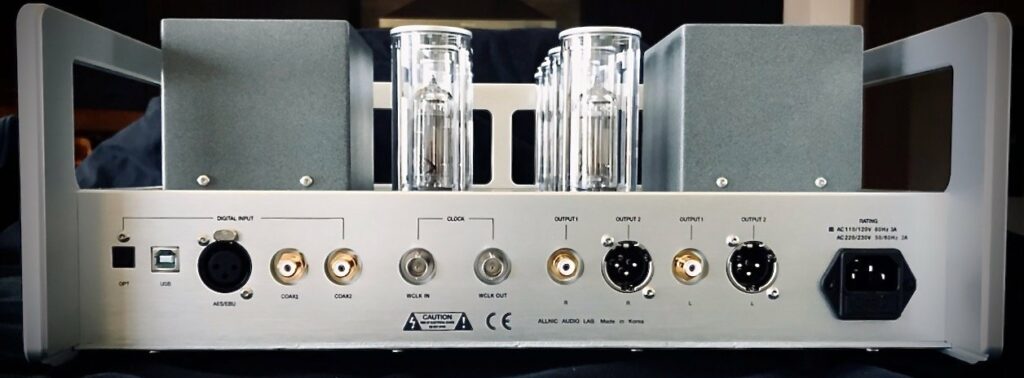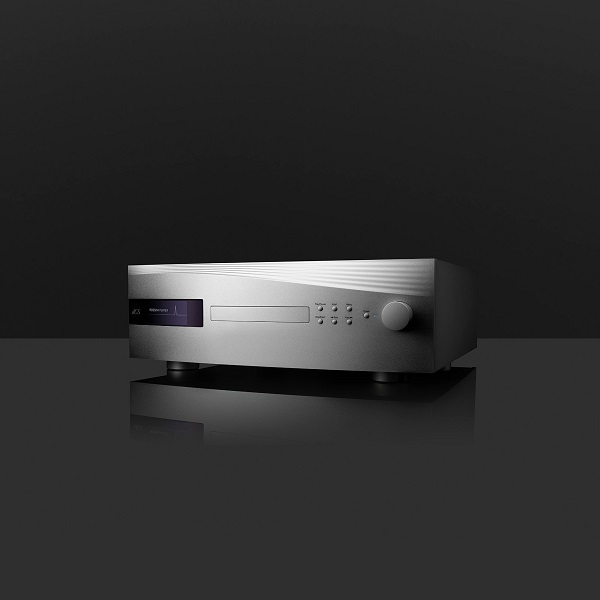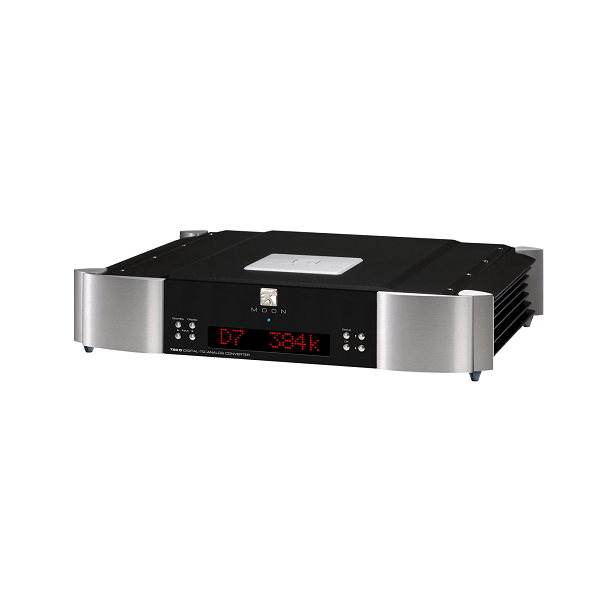Description
The sound was perfectly clear. The stage was endlessly transparent and clean, like a day completely without dust, smoke, or cloud. I thought, “This is the kind of sound you should hear with an OTL/OCL circuit applied to a vacuum tube DAC!” This is the story of the D-10000 OTL/OCL DAC recently introduced by Korean manufacturer ALLNIC.
“This is the kind of sound you should hear with an OTL/OCL circuit applied to a vacuum tube DAC!”
OTL/OCL (Output Transformer-Less/Output Capacitor-Less) is a circuit that literally removes the transformer of the vacuum tube amplifier output stage and the capacitor in the signal path. The output transformer lowers the high output impedance of the vacuum tube, and the capacitor in the signal path has the heavy duty of blocking DC, so omitting both of them has been a fairy-tale dream for manufacturers.
However, ALLNIC determined that these devices are the main culprits for distortion, coloration, and energy loss, so they spent years developing OTL/OCL circuits for their high-end preamplifiers, the L-10000, L-9000, and L-8500, and the HPA-5000XL headphone amplifier. The results have been a great success. As the output transformer and capacitor disappeared from the signal path, unimaginably pure and fresh sound flowed out like a wave. This is why foreign media praised the ALLNIC OTL/OCL preamplifiers as “Less is so much more”.
“Less is so much more”.
https://www.whatsbestforum.com/threads/announcing-the-d-10-000-otl-ocl-dac-an-industry-first.35157/
The most eye-catching front panel features are the Conversion (Conv) and Upsample buttons in the middle of the D-10000’s face. When the Conversion button is pressed, the input PCM signal is changed to a DSD signal and the DSD LED illuminates. When the Upsampling button is pressed, the user can select from a range of choices to upsample the PCM input signal all the way to 352/384kHz.
On the top plate, across both sides at the rear, there are separate power transformers for the digital circuits and the analog circuits. The vacuum tubes involved in the converted analog signals are arranged along the middle for each of the left and right channels. From the front, there are two pentode/triode 7258 tubes, two twin-triode 12AU7 tubes, and four 6C19P triodes. The 6C19P has a low internal resistance of just 400Ω, making it ideal for a preamplifier or DAC output.
From http://www.audioht.co.kr/news/articleView.html?idxno=17783
Technical Specification
ANALOG BOARD
OTL/OCL (Output Transformer-less/Output Capacitor-less) analog output designs to the very best of today’s DAC technology.
In common circuits, output capacitors or output transformers are these two coupling devices also introduce their own influences on the transmission of the musical signal, adding their own character (colouration), increasing distortion, and consuming small signals, all as predicted by physical efficiency theory. In addition, they also limit signal dynamics. For these reasons, the elimination of output transformers and capacitors has been considered the best solution for the design of the most accurate amplifiers. Removal of these two coupling devices from the signal path achieves the best results possible:
- No colouration of the musical signal
- Extremely detailed expression, natural harmonics, and subtle musical decay
- The lowest possible distortion
- The widest musical dynamics
TUBES
- Two (2) x 7258
- Two (2) x 12AU7
- Four (4) x 6C19P
DIGITAL BOARD
- operations via Linux OS with UAC2, Windows 10 above and MAC OSX, with the Thesycon driver incorporated for use in Windows OS environments
- dual mono ES9018K2M SABRE 32 Reference Audio DACs
- real-time PCM to DSD 128 conversion using a custom built 5.6 MHz up-sampler and FPGA DSD converter
- custom built, FPGA based, 1.5 MHz up-sampling to 384 KHz
- all digital inputs and a customized S/PDIF receiver accommodating rates up to 192 KHz
- a UAC2 standard compliant custom audio interface design, with Cypress FX2/FPGA USB input handling:
- Native DSD : DSD 64, DSD 128, DSD256
- DoP : DSD 64, DSD 128
- PCM 44.1 KHz, 48 KHz, 88.2 KHz, 96 KHz, 176.4 KHz, 192 KHz, 352.8 KHz and 384 KHz.
- in and out reference word clock connectors for use with an external clock
- High end DSD decoder for better DSD quality
- WAP/X engine for 2nd, 4th harmonic reconstruction
- 32bit WAP engine
| Technical Specification | |
|---|---|
| Inputs | One (1) X optical (“Toslink”) digital One (1) X USB One (1) X AES/EBU digital (XLR) Two (2) X coaxial digital (RCA) |
| Outputs | One (1) pair X unbalanced (RCA) One (1) pair X balanced (XLR) |
| Output RMS Voltage | 4 volts |
| Output Impedance | 50 Ω (Constant) |
| Power Consumption | 70W at 230 V / 110/120 V / 50 / 60 Hz |
| Fuse | AC 3A, 250V for 110/120 volt regions; AC 2A, 250V for 230/240 volt regions |
| Dimensions | 430mm (16.93 inches) x 320mm (12.5 inches) x 170mm (6.7 inches) (W x D x H) |
| Weight | 13.06 Kg (28 lbs.) unpacked 17 Kg (37.4 lbs.) in original packing |

